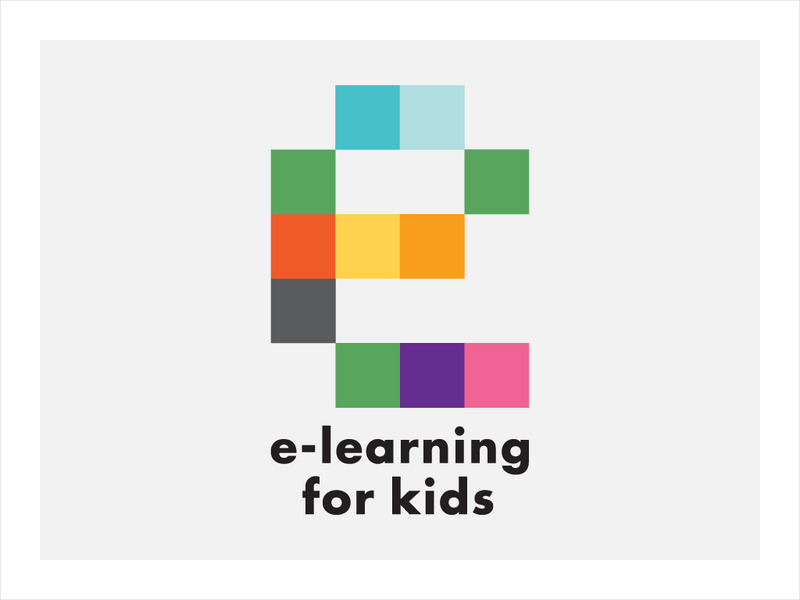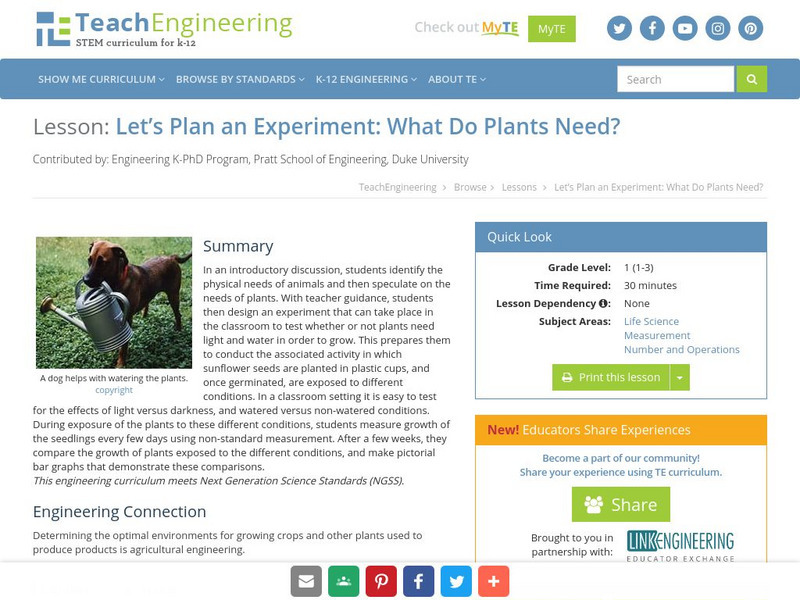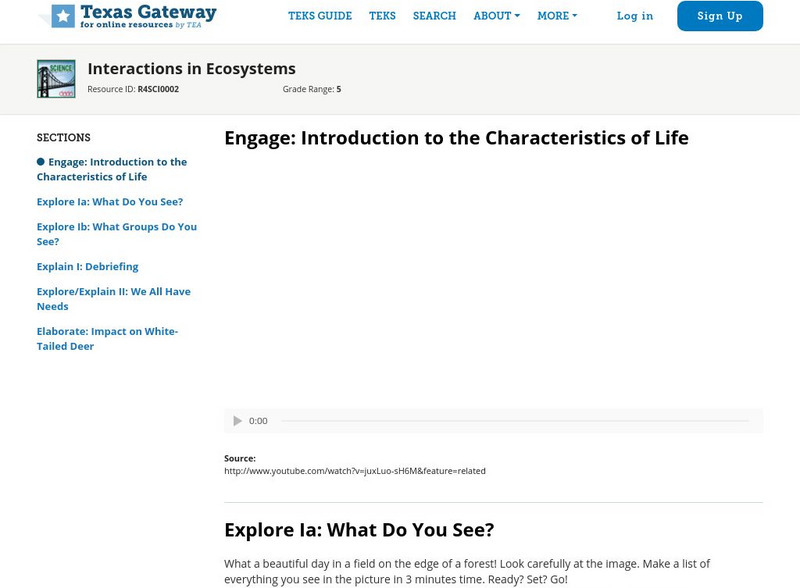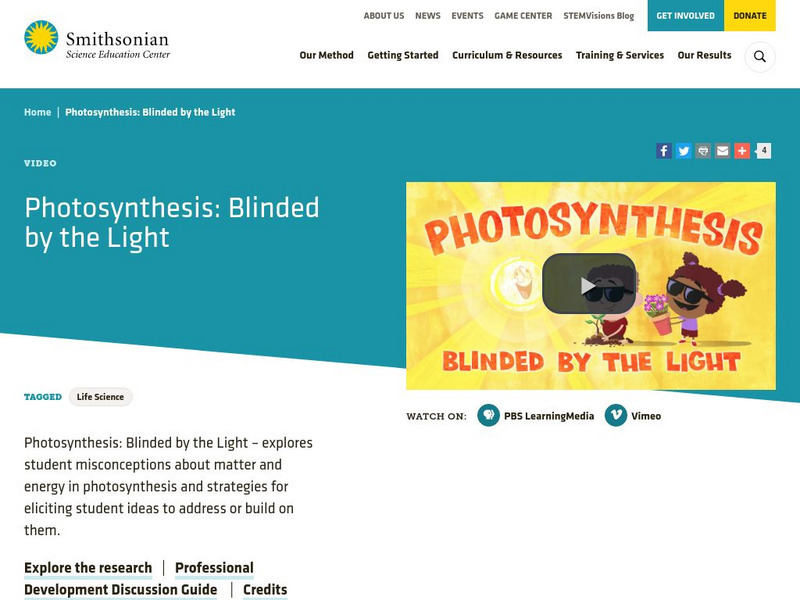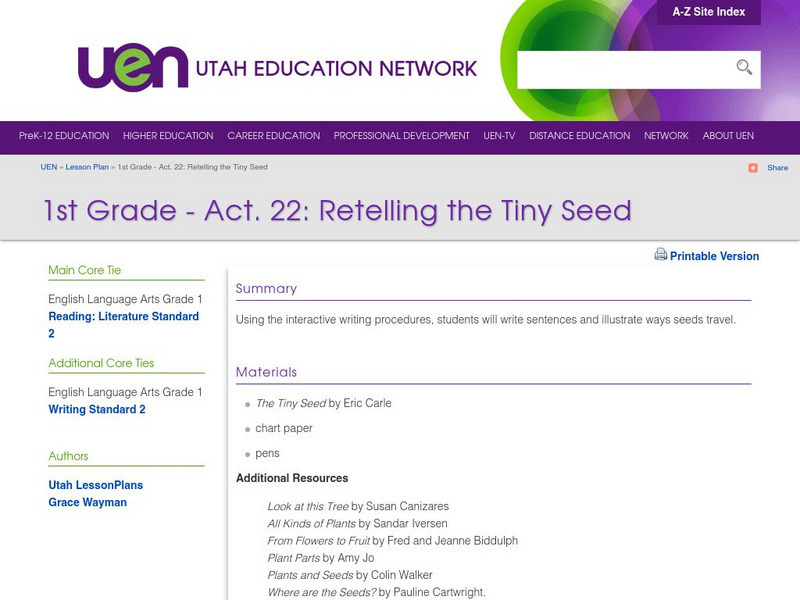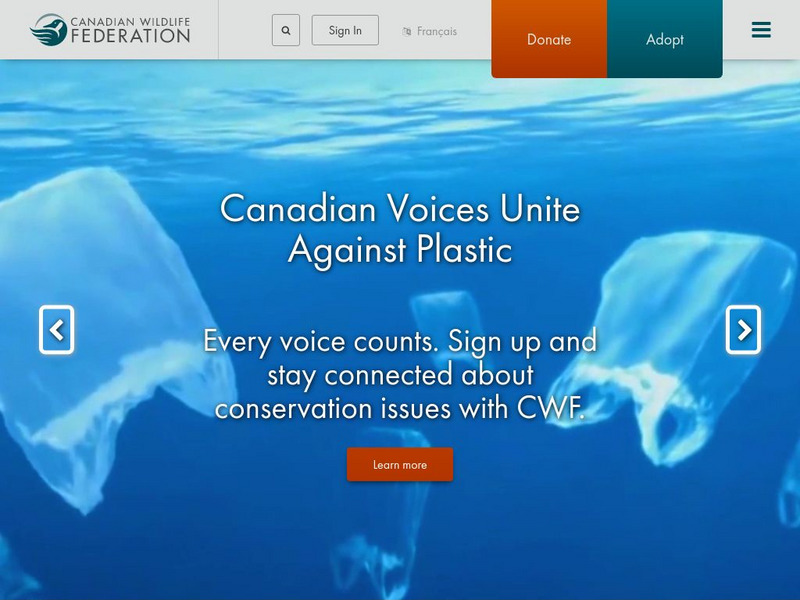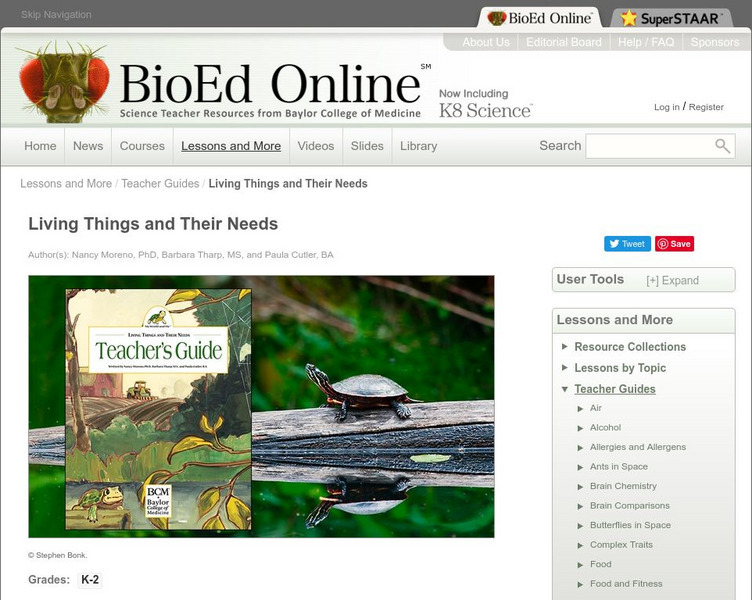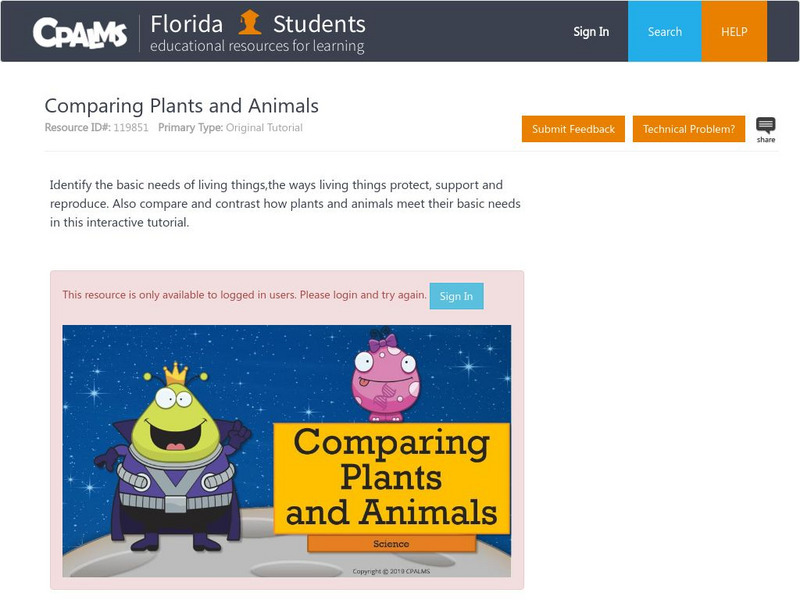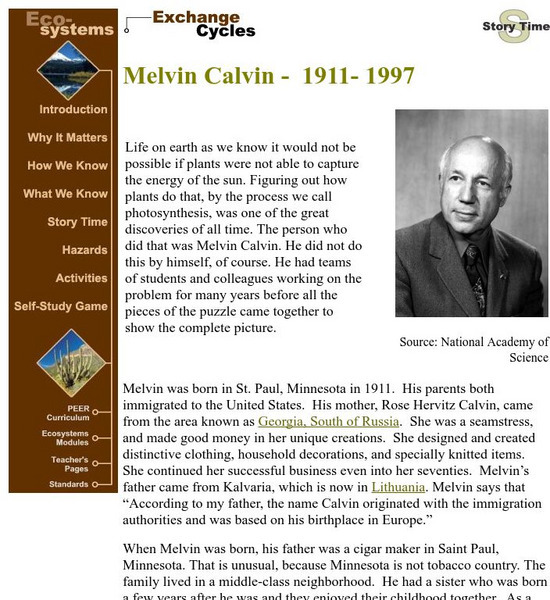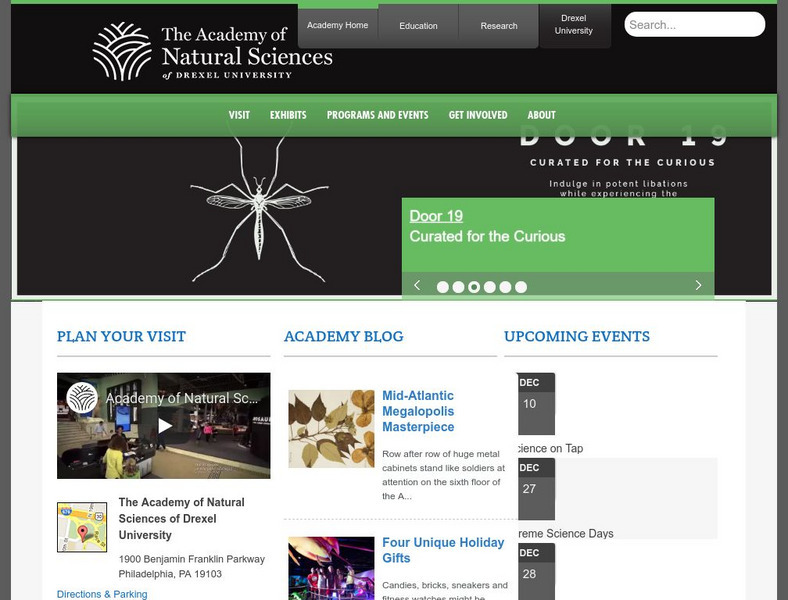Hi, what do you want to do?
E-learning for Kids
E Learning for Kids: Science: Vikings: How Do Plants Grow?
Olaf the viking is learning about the life cycle of plants. Help him tend to his garden as he learns.
TeachEngineering
Teach Engineering: Who Needs What?
The teacher leads a discussion in which students identify the physical needs of animals, and then speculate on the needs of plants. With guidance from the teacher, the students then help design an experiment that can take place in the...
Texas Education Agency
Texas Gateway: Introduction to the Characteristics of Life
Earth is the only place we have found life so far. The following tutorial provides a unique look into the characteristics of life.
Woods Hole Oceanographic Institution
Woods Hole Oceanographic Institution: Global Carbon Cycle
Interactive learning activity examines the global carbon cycle and describes the exchanges of carbon between the Earth's atmosphere, oceans, land and fossil fuels.
Smithsonian Institution
Smithsonian Science Education Center: Photosynthesis: Blinded by the Light
Delve into myths your students might hold about photosynthesis in this video. Help your students gain a better understanding of photosynthesis reactions and how plants use light energy for nutrition and growth.
Utah Education Network
Uen: 1st Grade Act: 22: Retelling the Tiny Seed
This activity engages students in story retelling to Eric Carle's book, The Tiny Seed. Students will participate in interactive storytelling as they write sentences and illustrate pictures about seed travel.
Utah Education Network
Uen: 1st Grade Act. 17: Observing Plants Through a Journal
This lesson engages students in learning about plant growth. Students will observe changes in a growing plant and then will write in their discovery journals to write observations and hypotheses about the plant growth. Students will also...
Other
Rose Hills Foundation Conservatory for Biological Science
All about plants has information on plant parts--seeds, flowers, fruits, roots, and spores--and plant processes--seed dispersal, germination, pollination, and photosynthesis. You can also take a tour of this Los Angeles-based...
Other
Implications of Sequencing Caenorhabditis Elegans Genome for Plant Nematology
From The American Phytopathological Society, this is a detailed discussion of the genomic sequencing of a type of nematode which is a plant parasite, including how knowledge of the genome structure might make it possible to create crop...
Other
Wild About Gardening: Encyclopedia
Get information on 575 different plant species using the WILD About Gardening Encyclopedia. Information is provided and can be searched under the following categories: Scientific Name,Common Name, Plant Type, Native Province, Zone,...
US Geological Survey
U.s. Geological Survey: The Usgs and Science Education
"Explore things on, in, around and about the earth," with this web site dedicated to K-12 education from the United States Geological Survey. Homework help, science topics and fun learning games for students in Kindergarten through High...
BioEd Online
Bio Ed Online: Living Things and Their Needs Teacher's Guide
This is a free downloadable teacher's guide (PDF) to teach young children (grades K-2) about living things and their needs.
CPALMS
Florida State University Cpalms: Florida Students: Comparing Plants and Animals
A tutorial that compares and constrast plants and animals. Explore how living things their obtain basic needs, protect, support, and reproduce. A PDF file of the tutorial is available.
Texas A&M University
Peer Curricula: Story Time: Melvin Calvin
A biography of Melvin Calvin, the chemist who figured out how photosynthesis works. The emphasis of this biography is on his early life, the development of his interest in science, and his education.
Other
Galapagos Islands: Wildlife Gallery
Great photos and descriptions of the wildlife in the Galapagos Islands. There are also links to information on the natural history, environment, and geology of these islands.
Other
The Chester Zoo in England
Read about the activities, educational programs, types of animals & plants, and the mission behind one of England's most popular zoos.
Huntington Library
Huntington Library: Garden Lesson Plans: Discovering Plants: Vocabulary [Pdf]
A one-page glossary of words that might be used by young students when studying plants.
Huntington Library
Huntington Library: Seeds, Soil, and Surprises
This site has excellent resources for teaching students about plants. It has a guide to scientific investigation and a glossary of plant terms. There are three lessons that each include a slideshow on the parts of a plant, the needs of...
Other
The Academy of Natural Sciences
This site describes the museum. It shows the viewer what is currently on exhibit, interesting facts, and many links to other exhibits.
Globe
The Globe Program: All About Earth: Our World on Stage [Pdf]
This delightful storybook provides young learners an understanding of how the Earth's processes work together. The students of an elementary classroom have been making costumes and practicing lines. Each student is playing the role of a...
Other
H2ous.org: H20 Use: Gardening Guide
Find inspiration for water-conserving gardens. Take a garden tour or look at the garden gallery for more ideas. Hot links are provided to favored plants and their detailed information.
BiologyWise
Biology Wise: Botany Terms Glossary of Botanical Terms
Gives the dictionary definitions for a lengthy list of terms used in botany.
BBC
Bbc Schools: Ks2 Bitesize: Science: The Living World
This landing page includes learning modules on the following topics of: animals, plants, microorganisms, life cycles and reproductions, food chains, habits, humans and the environment, adaptation, inheritance, and evolution.





